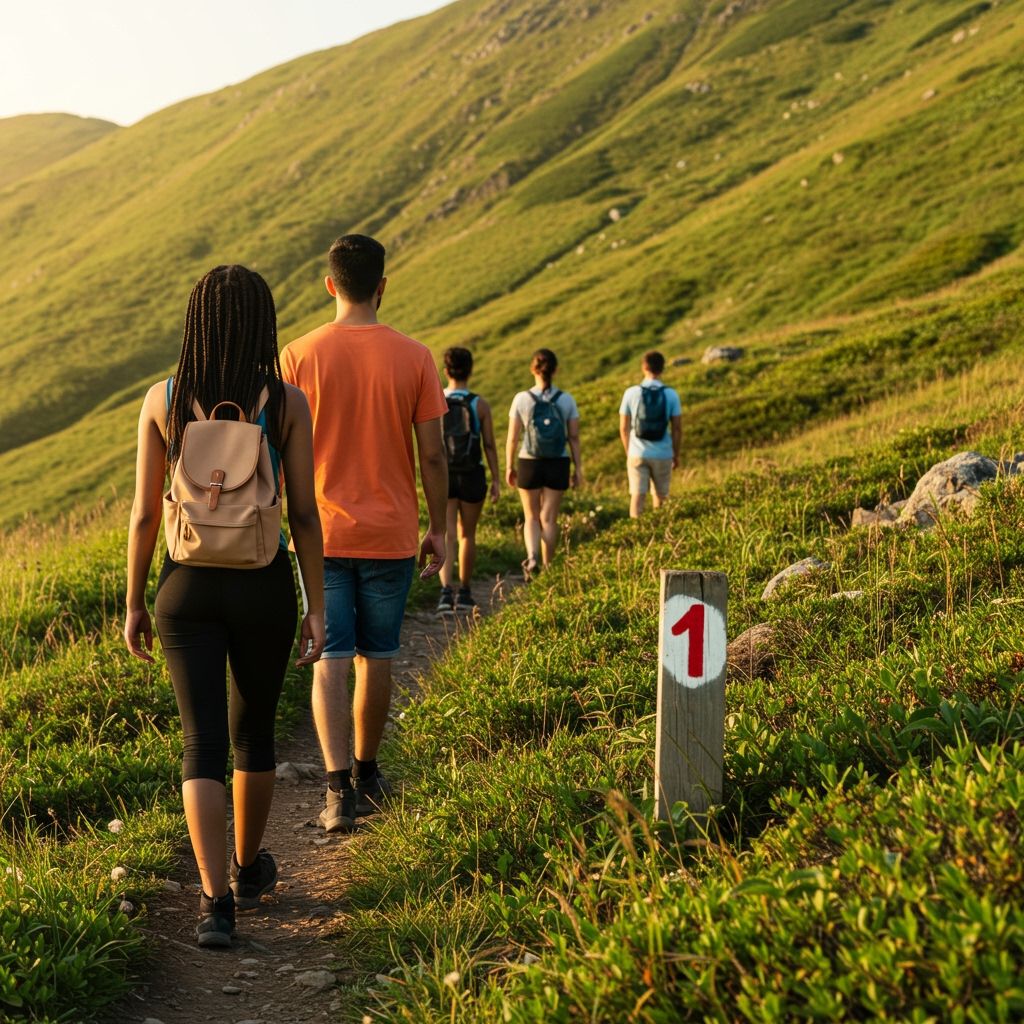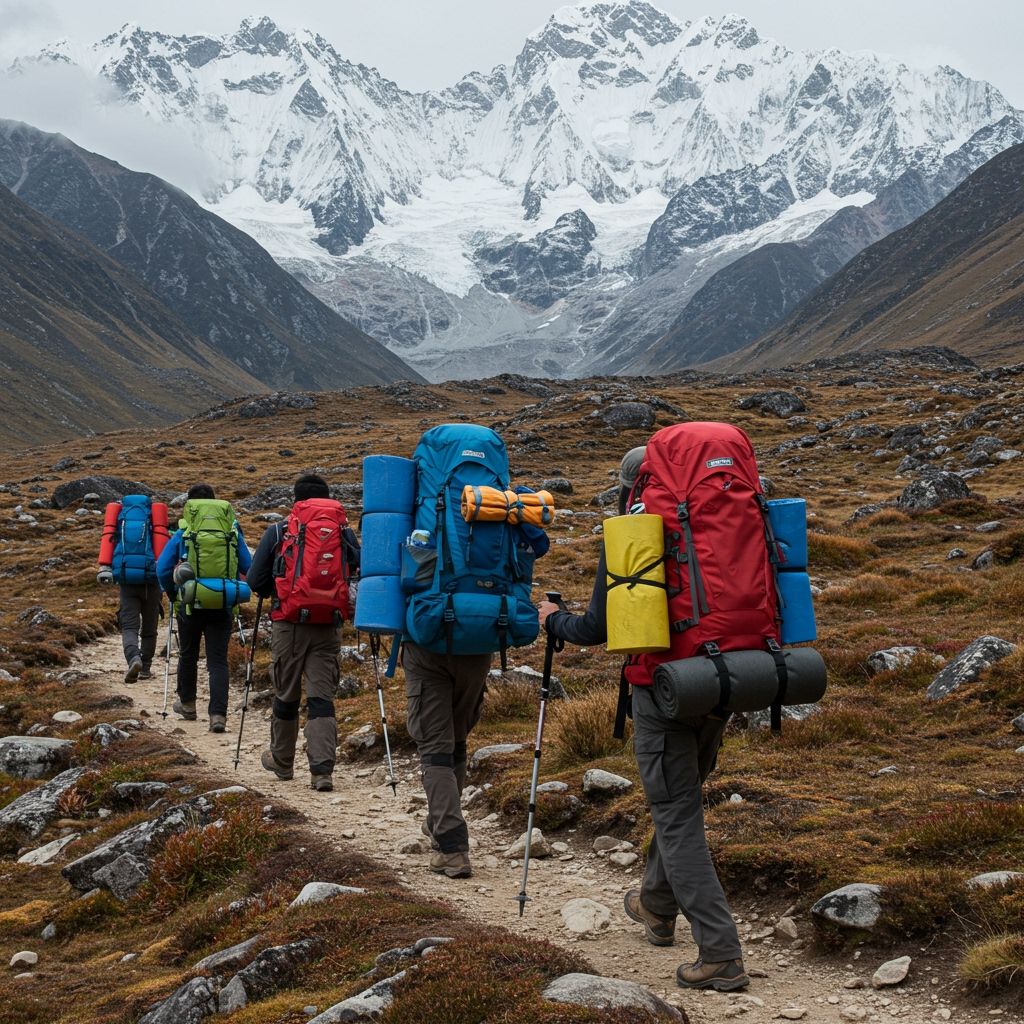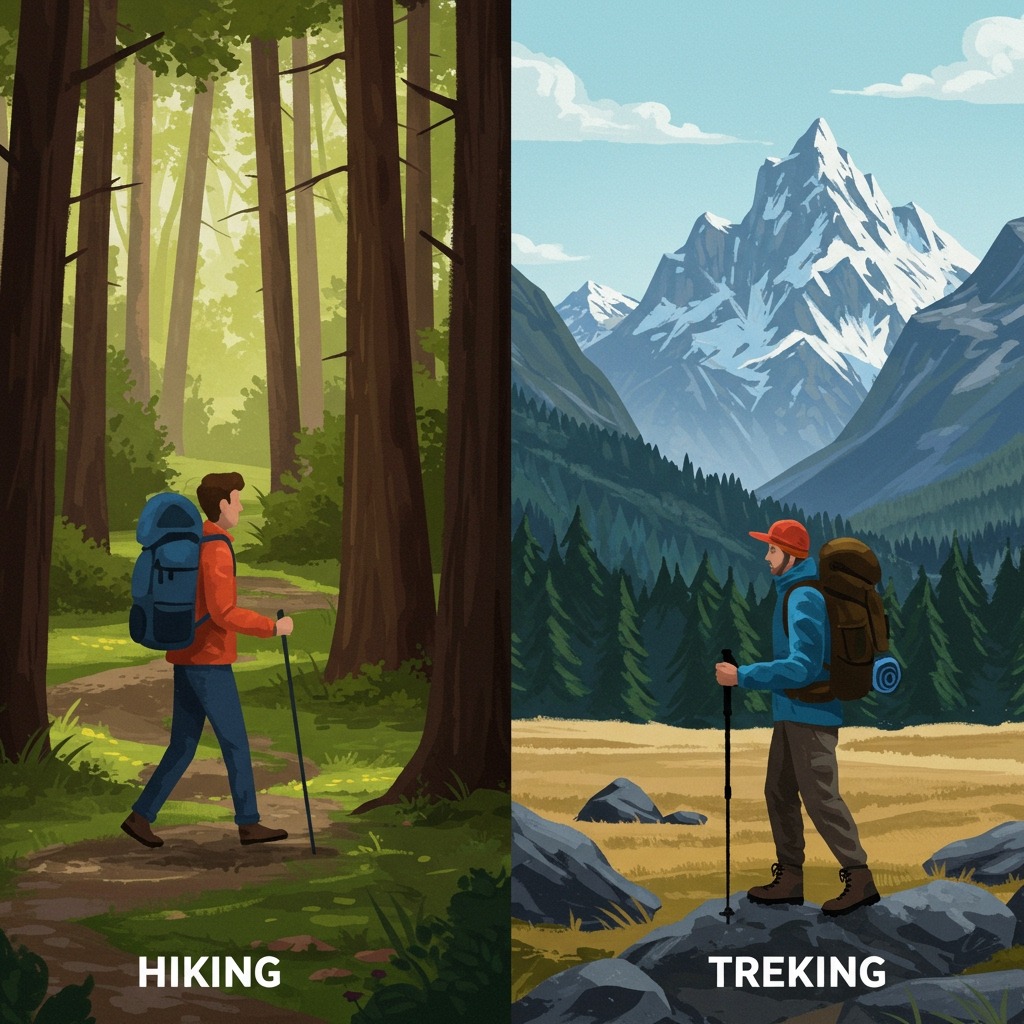Outdoor activities like trekking and hiking are often confused, but they’re not the same. If you’ve ever wondered whether you’re trekking or hiking, this guide will help you understand the differences—and decide which adventure suits you best. Whether you’re a beginner or an experienced outdoor enthusiast, knowing which activity suits your goals is essential.

Trekking vs Hiking: Key Differences You Need to Know
What is Hiking?
Hiking is a recreational activity that involves walking on marked trails or footpaths in natural environments such as forests, mountains, or parks. It’s typically shorter in duration and less demanding than trekking.
Key Features of Hiking
- Duration: Ranges from a few hours to a full day or an overnight trip.
- Terrain: Marked trails with varying difficulty levels, from flat paths to steep ascents.
- Equipment: Requires basic gear like sturdy footwear, a daypack, water, snacks, and a map.
- Purpose: Primarily for leisure and fitness, offering a chance to reconnect with nature.
Hiking is perfect for those who want to enjoy nature without committing to multi-day trips. It’s also ideal for beginners who are just starting their outdoor journey.
What is Trekking?
Trekking is more intensive and involves walking long distances over multiple days in remote wilderness areas. It’s less about following trails and more about exploring rugged terrains.
Key Features of Trekking
- Duration: Multi-day journeys, often lasting weeks or even months.
- Terrain: Unmarked paths through forests, mountains, or other challenging landscapes.
- Equipment: Requires specialized gear like tents, sleeping bags, trekking poles, and cooking supplies.
- Purpose: Often goal-oriented with a destination in mind, such as reaching a mountain summit or completing a pilgrimage.
Trekking is suited for adventurers who crave exploration and are prepared for physical challenges. It’s about pushing boundaries while immersing yourself in remote wilderness areas.

Key Differences Between Trekking and Hiking
To make the distinctions clearer, here’s a comparison table:
| Aspect | Hiking | Trekking |
| Duration | Short trips (a few hours to overnight) | Multi-day journeys (weeks or months) |
| Terrain | Marked trails | Rugged, unmarked paths |
| Equipment | Basic gear (daypack, water bottle) | Specialized gear (tent, trekking poles) |
| Physical Demand | Less demanding; suitable for beginners | High endurance required; challenging |
| Purpose | Leisure and fitness | Exploration and goal-oriented |
| Accessibility | Easily accessible trails | Remote locations; harder to access |
This table highlights the fundamental differences between the two activities. While hiking is more accessible and beginner-friendly, trekking requires preparation and resilience.
Choosing Between Trekking and Hiking
Deciding between trekking and hiking depends on your preferences, fitness level, time availability, and adventure goals.
1. How much time do you have?
If you only have a day or weekend available, hiking is the better option. Trekking requires several days or weeks to complete.
2. What’s your fitness level?
Hiking is suitable for beginners as it’s less physically demanding. Trekking requires significant stamina and mental endurance due to its challenging nature.
3. Do you want to explore remote areas?
If you’re looking for an immersive experience in untouched wilderness areas far from civilization, trekking is the way to go. Hiking tends to stick to accessible trails.
4. Are you seeking leisure or challenge?
Hiking offers relaxation and scenic views without pushing your limits too hard. Trekking provides a sense of accomplishment through physical challenges.

Practical Tips for Your Adventure
Whether you choose hiking or trekking, preparation is key to ensuring a safe and enjoyable experience.
For Hiking
- Pack essentials like water, snacks, sunscreen, and a first-aid kit.
- Choose trails that match your skill level—start with easy paths if you’re new.
- Wear comfortable shoes that provide adequate grip for the terrain.
- Check weather conditions before heading out.
- Inform someone about your plans if hiking alone.
For Trekking
- Train beforehand to build stamina—focus on cardio exercises like running or cycling.
- Carry survival gear like maps, compasses, tents, sleeping bags, and multi-purpose clothing.
- Plan for altitude acclimatization if trekking at high elevations.
- Hire guides or porters if trekking in unfamiliar regions.
- Pack lightweight but durable equipment to avoid unnecessary strain.
FAQs
Q: Can beginners try trekking?
Yes! Beginners can start with shorter treks that don’t involve extreme terrains. Training beforehand will help build endurance.
Q: What’s the best footwear for hiking vs trekking?
For hiking: Comfortable shoes with good grip are sufficient.
For trekking: High-cut boots with ankle support are recommended for rugged terrains.
Q: Is trekking more expensive than hiking?
Yes. Trekking involves specialized gear like tents and sleeping bags. You may also need guides or porters depending on the location.
Q: Can I hike without planning?
Hiking requires minimal planning compared to trekking. However, always check trail conditions and weather forecasts before heading out.
Final Thoughts
Both trekking and hiking offer unique ways to connect with nature while staying active outdoors. Hiking is perfect for short escapes into scenic landscapes with minimal preparation required. Trekking challenges your physical limits while immersing you in remote wilderness areas over extended periods.
Whether you’re looking for leisure or adventure, there’s an outdoor activity waiting for you. So pack your bags today—whether it’s for a short hike or an epic trek—and start exploring!
